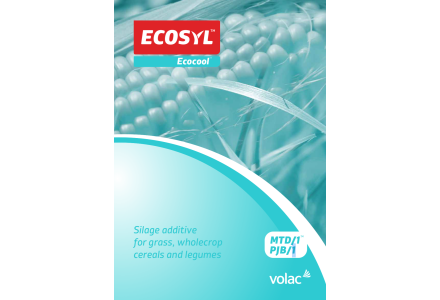© 2025 Volac International Limited. Ecosyl, Ecocorn and MTD/1 are Registered Trade Marks of Volac International Limited.
site by tictoc1. Because maize can be a breeding ground for ‘bad bugs’
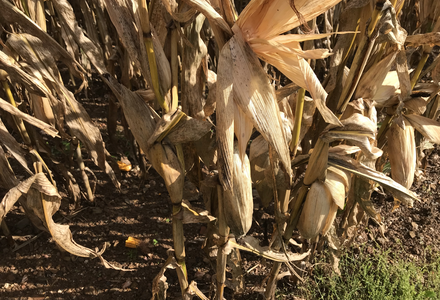
Dying or dead tissue in maize crops at harvest provides a haven for undesirable micro-organisms. As too does dirt and decomposing crop debris that accumulate in the plant’s leaf joints, while the stem base can be a ‘hot spot’ for mould spores.
These are in addition to maize diseases – such as eyespot and smut. And all these ‘bad bugs’ end up in the clamp, where some of them can play havoc with how well maize is preserved.
2. Because lost maize dry matter doesn’t just affect silage quantity – but quality too
_listing.png?1626957247)
Unfortunately, ‘bad bugs’ growing in the clamp don’t just ‘feed on’ the worst bits of the maize silage, such as the fibre. They take the best bits. So, by allowing them to take hold, it’s not just dry matter (DM) that’s lost, but the more nutritious parts of the dry matter – the sugars and starches.
Worse still, fungal contamination can also make maize silage less palatable so cows reject it, and can cause problems with mycotoxins.
3. Because maize can suffer invisible losses – not just obvious losses from visible yeasts and moulds
How dry matter can be lost from maize clamps
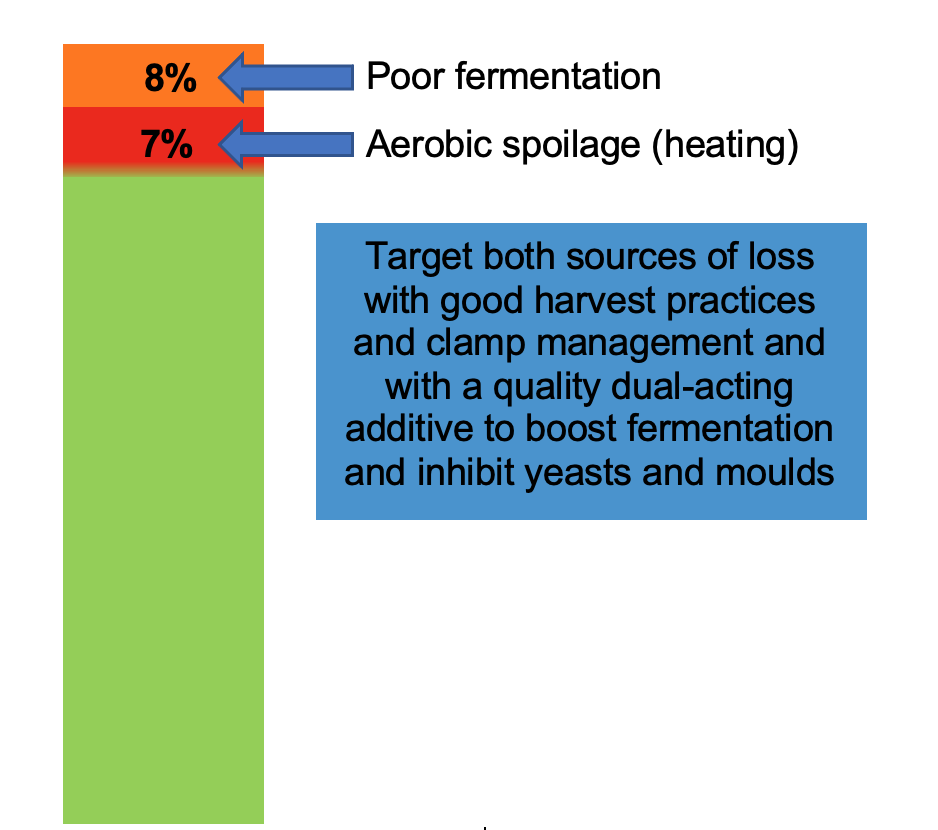
Most of us are familiar with losses from yeasts and moulds growing in the silage in the presence of air, resulting in heating. But this is only part of the story. Poor fermentation caused by the wrong types of bacteria in the clamp can also cause similar losses in dry matter. But these are invisible.
Between these two processes, typical maize dry matter losses can be around 15%. But they can be much higher – at 20 or even 30%.
4. To improve sustainability
Home-grown forage and silage are excellent sustainable feed sources.
By doing the best job of preserving maize silage, not only do you have potentially more silage available to feed but also potentially of better quality. This, in turn, means less reliance on bought-in concentrate, allowing financial savings, and can even reduce feed miles.
You can’t prevent ‘bad bugs’ growing on maize crops, but you can take better control of them at ensiling – using the beneficial bacteria in a proven additive to produce clamp conditions that stop them in their tracks.
5. Because a Volac dual-acting additive is backed-up by science. Find out which one is right for you…
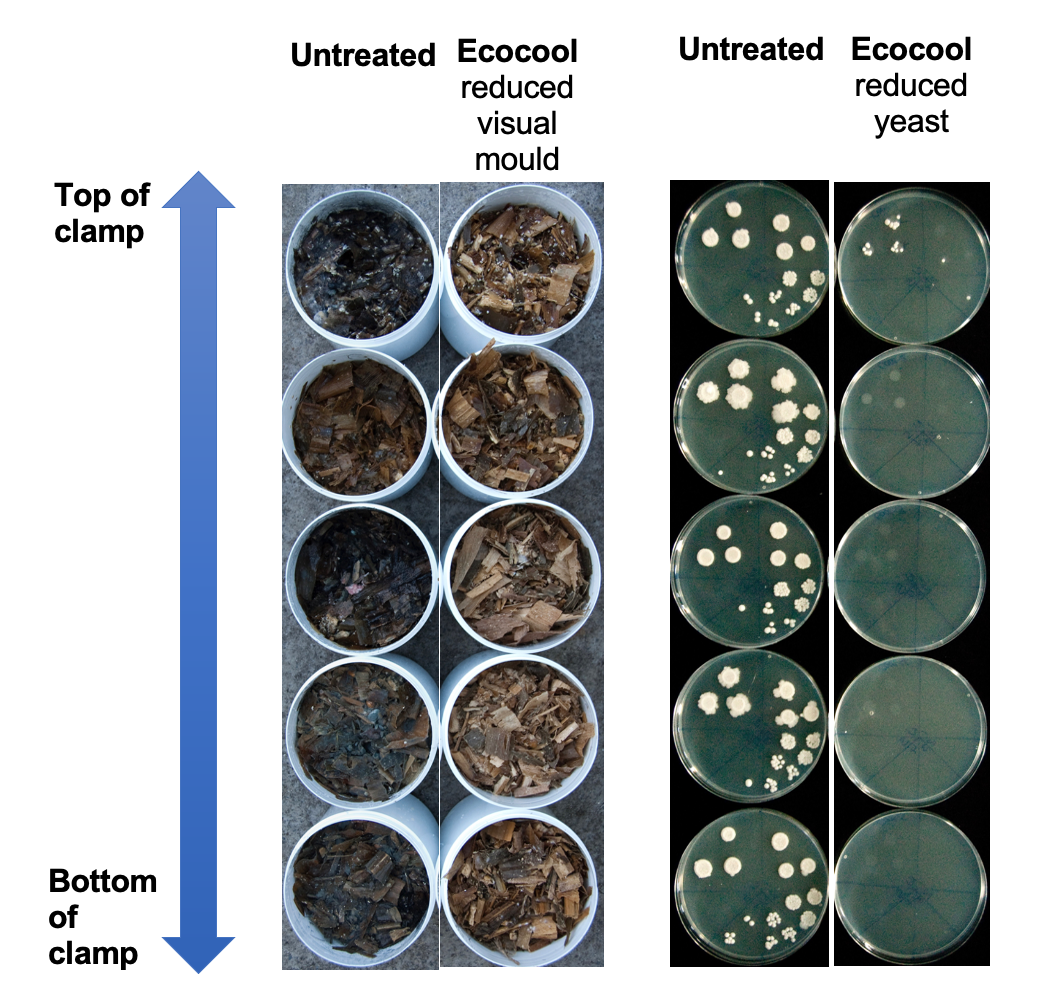
The dual-acting additive Ecocool is designed to improve fermentation and has been shown to reduce yeast and mould growth from the top to the bottom of the clamp
Both of the main Volac additives recommended for maize – Ecocool and Double Action Ecocorn – include the same beneficial bacterial strain found in Ecosyl. So you know they are backed-up by science. Plus, they are tested in the UK.
Ecocool is the one we recommend most widely for maize. Research has shown that treating with Ecocool cut yeast numbers and slashed total fresh weight maize silage losses (from poor fermentation and aerobic spoilage) by around a third. Better still, Ecocool has kept silage removed from the clamp cool and stable for more than 10 days.
Want to find out more about Ecocool?
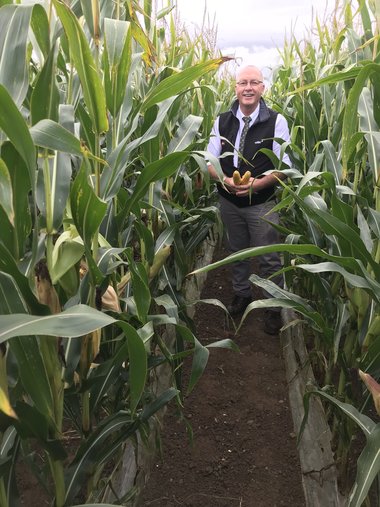
If you’re serious about making more milk from forage and relying less on bought-in feed, do you really want some of the hard work and expense you’ve put into growing this season’s forage maize go to waste?
Ken Stroud
DOWNLOAD: Growing Maize for silage? ⬇️
Growing maize for silage? Read our handy Cut to Clamp guide to help you get the most from this valuable forage.
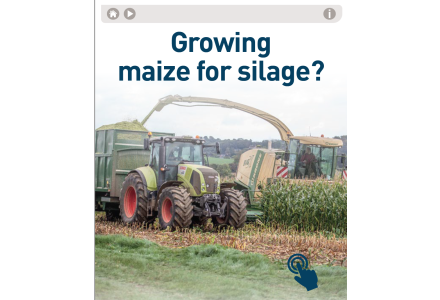
Ecocool Product Brochure ⬇️
Silage additive for grass, wholecrop cereals and legumes
